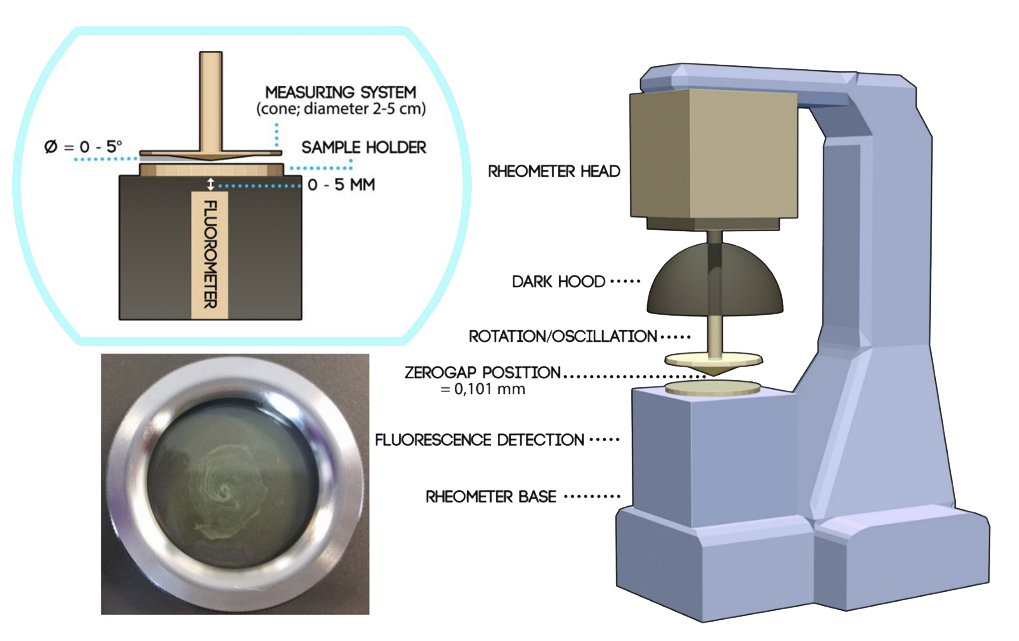Rheometer

Introduction of a fluorometer into a cone and base principle-based rheometer allowed the measurement of thrombin generation (using a thrombin-sensitive substrate) and fibrin formation (changes in viscosity), while applying a linear shear flow (ranging from venous to arterial flow). The device allows the measurement of platelet-poor and -rich plasma, as well as whole blood. Increasing shear rates inversely related with thrombin generation and fibrin formation. Increasing fibrinogen concentrations in defibrinated plasma resulted in increased thrombin generation and fibrin formation. In pre-operative samples of 70 patients undergoing cardiothoracic surgery, fibrin formation and thrombin generation parameters correlated with fibrinogen content, rotational thromboelastometry (ROTEM) and whole blood Calibrated Automated Thrombinography (CAT) parameters, respectively. Interestingly, this test proved to be indicative for the amount of blood loss during/after cardiothoracic surgery.


